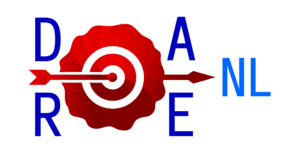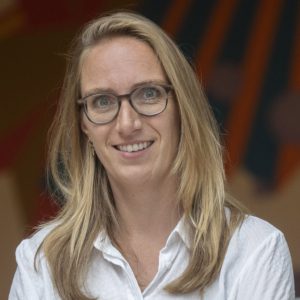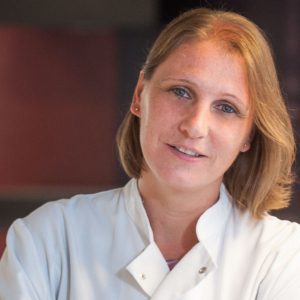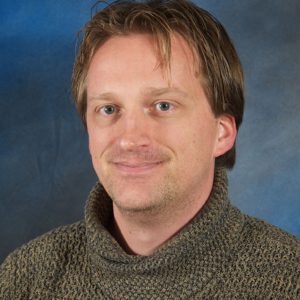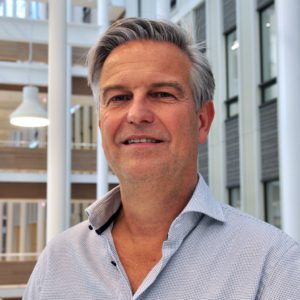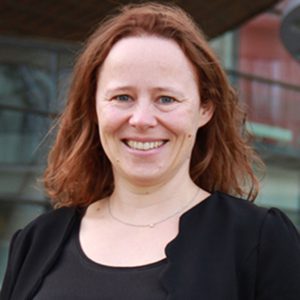WP1
Setup of the DARE-NL data, training, and valorisation platform
Lead:
Participants: EMC (lead) UMCU, UMCG, LUMC, Sanquin, Princess Máxima Center, AUMC, MUMC, RadboudUMC, NKI/AVL, UU
The goal of WP1 is to set-up a self-sustaining IT infrastructure that underpins DARE-NL and supports its partners in generating ATMP products that are of high-quality and maximally accessible to patients (lead: Trudy Straetemans).
Secondly, WP1 aims to train the next generation of personnel critical for ATMP development and production that will bring research products into the clinic (lead: Emma de Pater).
To reach this goal, the combined expertise regarding academic ATMP in the Netherlands (and beyond) is required. To this end, DARE-NL has already involved the Dutch-Belgian ATMP working group supported by NVZA-WSN-VZA, the Dutch-Belgian WSN working group Stem cell therapy, the HOVON Immune Effector Cell working group, and the Regulatory Science Network Netherlands. Importantly, regulatory science experts from Utrecht University (UIPS) and Oncode support DARE-NL and will contribute their expertise on regulatory learning and valorisation (lead: Emma de Pater).
Objectives:
- Implementation of an IT infrastructure for best practices and knowledge exchange of research, people and production of ATMPs
- Establishment of a centralized educational program and customized training for different categories of future ATMP developers.
- Set up a valorisation framework for managing results and IP generated by the DARE-NL consortium
In WP2 we will collaborate with the members of the Dutch-Belgian ATMP working group and build on their efforts to exchange information between centers and harmonizing specific procedures needed to produce ATMPs under GMP guidelines. The ATMP working group was established in 2009 when the regulations of manufacturing cell and gene therapy products for clinical use were still in its infancy. Regular meetings are organized and sub committees have been established with dedicated tasks such as the committee for central qualification of suppliers. The strength of the working group is that it connects all staff members of ATMP production sites, including Qualified Persons, pharmacists, Quality Control and Quality Assurance experts, but also translational scientist that aim to translate ATMP concepts into clinical practice. The ATMP working group has committed time to DARE-NL in order to support the acceleration, professionalization and extension of GMP process harmonization and sharing in DARE-NL.
To build on the activities of the ATMP working group and as a part of the central qualification of suppliers, harmonization will be extended with shared approval and release procedures for start, raw and critical materials, which will become available for all members. By harmonizing the procedures and the common use of the approved materials (WP2.1, led by Harry Dolstra) the ATMP manufacturers will jointly be a negotiating partner for the suppliers. This will lead to dialogue with suppliers, sending out questionnaires and perform centralized audits or if needed to encourage suppliers to meet the quality standards for use of materials in GMP production (WP2.2, led by Coba van Zanten). Although these are separated activities, the 2 sub WPs are strongly connected and results from WP2.1 will be used in WP2.2. These combined efforts allow researchers to have information available regarding materials that can be safely used in their procedures and as such support decision making in early stage of the development of ATMPs. Next, in WP2.3, led by Trudy Straetemans , harmonized SOPs for generic procedures, like personnel qualification, facilities and equipment will be delivered in the DARE-NL knowledge platform to support a harmonized interpretation of the GMP for ATMPs regarding generic aspects of the quality system. Lastly, product-specific harmonization will be the goal of WP2.4, led by Trudy Straetemans, by sharing data of process validations and productions of ATMPs in the joint database in order to compare between centers for multicenter production studies, educate centers that start producing and evaluate our productions. The national DARE-NL IT system, which is the backbone of the infrastructure (see WP1) will function as a document review system for national harmonized GMP procedures and protocols and as a database that may be used by all DARE-NL members.
Objectives:
- Harmonize risk assessments for raw materials, substances and disposables
- Centralize vendor and QC laboratory qualifications
- Harmonize Standard Operating Procedures for the validation of equipment and generic processes
- Development of a shared data platform / registry for product specific validation and ATMP production data
WP2
Harmonising GMP processes for the manufacturing of cancer-specific ATMPs
Lead:
Participants: UMCU (lead), NKI/AVL, EMC, Sanquin, RadboudUMC, UMCG, LUMC, Princess Máxima Center, UU, AUMC
WP3
QC harmonization and assay development
Lead:
Participants: NKI/AVL (lead), LUMC, EMC, Princess Máxima Center, UMCU, RadboudUMC, Sanquin, UU, AUMC
To determine safety, appearance, identity, quantity, viability, purity, (lack of) microbiological contamination, and potency of ATMPs, each ATMP center in the Netherlands has individually developed distinct quality control assays based on local expertise, leading to a scattered and diverse ‘QC landscape’. Further, sometimes assays developed in research labs have been translated to application in the GMP production sites with limited levels of validation. In addition, to meet GMP requirements some assays are outsourced to certified third party contract laboratories, thereby increasing the logistic and legal complexity and costs.
Whereas interlaboratory assessment of performance is common practice in diagnostics, no harmonization of QC assay performance is currently being executed between different ATMP centers in the Netherlands, hampering standardization and interlaboratory assessment of performance. The workplan in this WP sets out to establish such a harmonized interlaboratory framework for ATMP quality control (lead: Inge Jedema). In addition, requirements for QC and ATMP characterization in EU member states, the UK and USA will be defined (lead: Reno Debets).
Objectives:
1. Create and validate standardized assays for safety, appearance, purity, identity, and potency of ATMPs
2. Implement standardized assays in QC laboratories of partner centers.
3. Define assay requirements for international multicenter trials and registration via EMA/FDA cross-talk with WP6).
Participants: UMCG (lead), AUMC, RadboudUMC, Princess Máxima Center, Sanquin
Raw materials such as viral vectors are key for academic ATMP manufacturing. Therefore, a centralized academic vector manufacturing platform for ATMP development is set-up within WP4. This manufacturing platform will initially be focused on lentiviral and retroviral vectors, with the majority of current (e.g. CD19 CAR-T Yescarta/retrovirus and Kymriah/lentivirus) and near-future clinical cellular products being produced using lenti/retrovirus as raw material. The manufacturing platform is designed to facilitate rapid translational development of up-and-coming next-generation ATMPs including CAR-T and CAR-NK.
This work package comprises the setup of GMP-grade lentiviral and retroviral vector manufacturing processes (WP4.1 led by Edwin Bremer and WP4.2 led by Tuna Mutis, respectively), the development of all requisite Quality Control (QC) tests for a GMP-grade vector manufacturing process (WP4.3, led by Edwin Bremer), and delineation of the process towards clinical-grade vector production and regulatory requirements (WP4.4, led by Edwin Bremer). Lentiviral vector platform manufacturing will be performed at the UMCG in collaboration with Radboudumc, whereas retroviral production platform will be implemented at the AUMC. The quality control (QC) and biosafety testing of both systems will be developed and implemented in a collaborative effort by UMCG/AUMC/Radboudumc.
Once established, the GMP vector manufacturing platform will be made available as a resource to all DARE-NL partner sites (WP4.5, led by Tuna Mutis). By centrally tackling these topics, all DARE-NL partners within the Netherlands will benefit from a stream-lined development process from idea to implementation, and new developments can be rolled out rapidly to allow quicker access of cancer patients to new ATMP technology.
Importantly, during the upscaling and implementation of the lenti/retrovirus manufacturing, GMP-like vectors (generated exactly the same as GMP-graded vectors) will be used to limit the costs of the implementation process. Although the generated virus batches cannot be used in the clinic, all products will be subjected to complete biosafety testing in order to fully control the process, quality and safety of the products. To ensure the reproducibility of the virus production, we will generate 3 full scale GMP-like virus batches.
Objectives: to deliver academic production of lentiviral and retroviral vectors for ATMP (pre)clinical development through:
1. A unified platform to serve DARE-NL members for small scale clinical trials
2. Established regulatory package for rapid completion/progression of IMPD, including all required QC testing
3. Academic pricing
WP4
Setup of a Dutch academic GMP vector manufacturing platform
Lead:
Participants: UMCG (lead), AUMC, RadboudUMC, Princess Máxima Center, Sanquin, EMC
WP5
Identification and implementation of new technologies for the development and GMP-compliant manufacturing of ATMPs
Lead:
Participants: RadboudUMC (lead), LUMC, EMC, NKI/AVL, UMCU, Sanquin, Princes Máxima Center, UMCG, UU, AUMC
Many innovative non-viral ATMP technologies are being developed by members of DARE-NL, including CRISPR technologies, mRNA/siRNA-mediated modification and other non-viral active pharmaceutic ingredient delivery approaches. In addition, in vivo engineering of immune effector cells to e.g. improve antigen-loading and genetic modification by receptor-targeted biologicals or viral vectors are being pioneered and developed for future clinical application. The different partners in DARE-NL are already making efforts to translate these techniques towards production under GMP. In DARE-NL this knowledge and applied reagents will come together and will be shared, as expertise is currently scattered and mostly locally available. Within WP5, DARE-NL members and the GMP manufacturing experts of the ATMP working group will work together to deliver GMP proof key biologics to speedup efforts on novel ATMP technologies. In brief, WP5 will map the landscape of new technologies for ATMP production, high-end technologies and artificial intelligence in production devices in connection with WP2 (WP5.1, led by Harry Dolstra), develop and deliver GMP proof key non-viral engineering technologies and delineate the process towards clinical-grade production and regulatory requirements thereof (WP5.2, led by Harry Dolstra), develop and deliver GMP proof genome editing reagents such as CRISPR/Cas-9 technologies and delineate the process towards clinical-grade production and regulatory requirements (WP5.3, led by Mirjam Heemskerk). This mapping and development, once established will be used to setup roadmaps and financial business plans for joint outsourcing or centralized manufacturing for GMP grade reagents at a dedicated DARE-NL production site, with the viral manufacturing platform of WP3 as template (WP5.4, led by Harry Dolstra). The inventory of technologies, roadmaps for key biologics, QC control analysis for key biologic ingredients evaluated in WP5 will be archived in the national DARE-NL ICT system (WP1). By centrally tackling these topics, all DARE-NL partners within the Netherlands will benefit from a stream-lined development process from idea to implementation, allowing quicker access of new ATMP technology to cancer patients.
Objectives:
1. Identify new ATMP technologies and setup knowledge exchange platform for GMP manufacturing
2. Set-up nation-wide Dutch academic biologics manufacturing roadmaps for key new technologies
WP6 aims to develop roadmaps for ATMP regulatory pathways and establish a center of expertise regarding regulatory science (WP6.1, led by Lourens Bloem) and health economics (WP6.2, led by Renske ten Ham); to create an overview of ATMP development and manufacturing costs at each partner institute in order to create and implement a validated cost tool (WP6.3, led by Renske ten Ham); to create an informal multi-stakeholder knowledge sharing and dissemination platform to shape ATMP policy (the “sandbox”; WP6.4, led by Pauline Meij and Lourens Bloem); and to stimulate timely patient access to ATMP therapies by developing registries for hospital exemption of oncological ATMPs and oncological ATMP-trials in the Netherlands in close collaboration with patient organizations (WP6.5, led by Pauline Meij and Lourens Bloem). Projects such as ‘bringing TIL therapy for patients with metastatic melanoma towards market authorization upon successful completion of the randomized phase III trial (NKI/AVL)’ and ‘POC manufacturing of CAR-T cells (WPs 2 and 4, UMCG, UMCU, Princess Máxima Center, LUMC, Sanquin, RadboudUMC)’ will function as case studies in the execution of this WP.
Objectives: To enable durable patient access to academic oncological cell and gene therapies (CGT) through:
1. A comprehensive searchable overview of Manufacturing, Regulatory and HTA-pathways to inform development strategy for oncological ATMPs early in development, including:
· A (historic) database of developed ATMPs
· An overview of Regulatory and HTA evidence requirements
· Design of a tool to assess academic CGT-specific development cost
2. Continuous dialogue with relevant policy and decision-makers such as CCMO, MEB and ZIN; a stakeholder sandbox to shape ATMP-specific regulatory and HTA policy such as hospital exemption
3. A (voluntary) registry for i) hospital exemption and ii) trials of oncological ATMPs in the Netherlands
4. Involvement of a patient advisory board throughout the activities of DARE-NL
WP6
Regulation, health economics, health technology assessment and patient access
Lead:
Participants: LUMC (lead), UMCU, UU, NKI/AVL, MUMC, RadboudUMC, Princess Máxima Center, EMC
WP7
Project management
Lead:
The project management structure is based on the foundations of the Prince2 method for project management (British Office of Government Commerce) and embraces the principles of simplicity, transparency, and effectiveness. The project manager as a spider in the web prepares project meetings and reports; keeps track of deliverables, milestones, budget and timelines; facilitate collaboration and communication within, between and outside the WPs; and organizes legal and financial documentation.
Objectives:
1. Facilitate efficient communication between all stakeholders
2. Manage project budget
3. Time management (check WPs and milestones)
4. Manage technological and general risks
5. Generate project reports based on partner input
6. Realise a sustainable DARE-NL infrastructure
